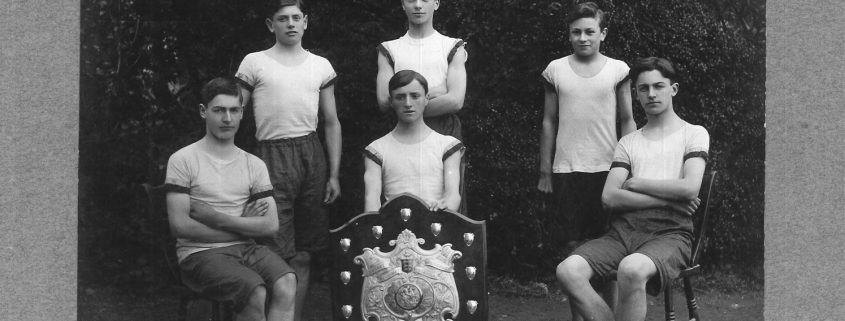Victor Charles Prince
Surname: Prince
Other names: Victor Charles
Locations in this story: Salisbury, WiltshireSt. Ann Street, SalisburyChoir School, Salisbury Cathedral, SalisburyShaftesbury Grammar School, Shaftesbury, DorsetDrewsteignton, DevonBouchavenes, Arras, FranceVis-En-Artois Cemetery Memorial, France
Story: Victor Charles Prince was born in 1898 in Salisbury, Wiltshire. He was the son of William John Prince, a baker, and Agnes Jane Prince. The family lived at 66 St. Ann Street, Salisbury. In 1906 Victor was admitted to the Choir School at Salisbury Cathedral and at the time of the 1911 Census was a boarder there. He attended Shaftesbury Grammar School from September 1913 to December 1915. He was an outstanding sportsman and was a member of the school football team in 1913, 1914 and 1915 (Captain). He was also a member of the cricket team in 1914 and 1915. He represented the school in the Dorset Inter-School sports, winning the 100 Yards, 220 Yards and Quarter Mile in 1914 and 1915. He was a founder member of the school Cadet Corps and became Platoon Sergeant. He was an assistant librarian in the school library and passed the Cambridge Junior Locals in 1915. On leaving school he entered the Salisbury branch of the London City and Midland Bank.
In August 1916 Victor joined the Rifle Brigade and in December received his commission as a 2nd Lieutenant in the 4th Battalion London Regiment. On 14th December 1917 he was posted to France. In August 1918 he returned on leave and visited the Shaftesbury Grammar School Cadet Camp at Drewsteignton. He returned to France and on 1st September 1918 was killed in action at Bouchavenes, south of Arras. According to the school magazine, “When killed, he was gallantly leading his men into action; he had already previously been wounded and had refused to go back, and he and his greatest friend were killed by the same shell.” In January 1919 it was announced in the London Gazette that he had been awarded the M.C. This was for the action in which he lost his life.
Victor’s name appears on the Vis-En-Artois Cemetery Memorial (Panel 10). He is also remembered on the Salisbury War Memorial, the memorials in St. Martin’s Church and the Choir School and on the Roll of Honour in St. Thomas' Church in Salisbury.
As a former pupil his name was recorded on the Shaftesbury Grammar School war memorial, now in Shaftesbury School. Throughout the war a hand-written list was compiled of Shaftesbury Grammar School old boys serving in the armed forces. An asterix can be seen next to Victor's name, indicating that he had died. The board is now at Gold Hill Museum.
Printed Sources:
Shaftesbury Grammar School Magazine, November 1918
Shaftesbury Grammar School Magazine, March 1919
In August 1916 Victor joined the Rifle Brigade and in December received his commission as a 2nd Lieutenant in the 4th Battalion London Regiment. On 14th December 1917 he was posted to France. In August 1918 he returned on leave and visited the Shaftesbury Grammar School Cadet Camp at Drewsteignton. He returned to France and on 1st September 1918 was killed in action at Bouchavenes, south of Arras. According to the school magazine, “When killed, he was gallantly leading his men into action; he had already previously been wounded and had refused to go back, and he and his greatest friend were killed by the same shell.” In January 1919 it was announced in the London Gazette that he had been awarded the M.C. This was for the action in which he lost his life.
Victor’s name appears on the Vis-En-Artois Cemetery Memorial (Panel 10). He is also remembered on the Salisbury War Memorial, the memorials in St. Martin’s Church and the Choir School and on the Roll of Honour in St. Thomas' Church in Salisbury.
As a former pupil his name was recorded on the Shaftesbury Grammar School war memorial, now in Shaftesbury School. Throughout the war a hand-written list was compiled of Shaftesbury Grammar School old boys serving in the armed forces. An asterix can be seen next to Victor's name, indicating that he had died. The board is now at Gold Hill Museum.
Printed Sources:
Shaftesbury Grammar School Magazine, November 1918
Shaftesbury Grammar School Magazine, March 1919
Links to related web content / sources: Commonwealth War Graves Commission The National Archives Shastonian










